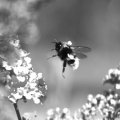A statistical model developed by a University of Queensland mathematician is helping the world's surgeons plan major heart surgery.
In collaboration with medical researchers and former director of the Heart Transplant Unit at Brisbane's Prince Charles Hospital Dr David McGiffin, Mathematics Department reader Dr Geoff McLachlan has quantified the relative benefits of biological and mechanical heart valves for particular patients.
A University of Queensland medical graduate, Dr McGiffin is now Professor of Cardiac Surgery at Alabama University in the United States of America.
The resulting mathematical model will help surgeons and patients decide on the device best suited to particular needs.
To construct the model, the researchers used data on around 30 variables for each of 2000 patients undergoing cardiac surgery at the hospital over the past 20 years. Variables included patient age at the time of the operation, health record before and after the procedure and lifespan (if now deceased).
Their studies were funded by the National Heart Foundation of Australia and the Prince Charles Hospital Foundation, and three articles have been published in the prestigious American-based Journal of Thoracic and Cardiovascular Surgery.
The researchers' latest study focuses on the probability that a patient who receives a biological (as opposed to a mechanical) replacement heart valve eventually will have to undergo a valve replacement operation.
Biological valves include those from human donors or those made from pig skin. The model developed by Drs McLachlan and McGiffin provides mathematical support for the general idea that because there is a higher chance of a biological valve recipient needing a valve replacement operation, these valves are more suited to older patients.
'This is because there is also a high probability these patients will pass away before the need for a valve replacement operation due to leaflet degeneration,' Dr McLachlan said.
'On the other hand, because of the lower probability of the need for a replacement operation, durable and almost fail-safe mechanical valves are more suited to younger patients.'
However, he stressed surgeons had to weigh up many other factors when deciding which device to use. For example, a patient receiving a mechanical replacement valve must remain permanently on blood thinning drugs to reduce the risk of bleeding or clotting of the valve. In their favour, human donor valves had much less risk of infection, he said.
'So the choice between valve types is not clear-cut. However, our model gives surgeons and patients precise mathematical-based estimates which can be used to weigh up the advantages and disadvantages.'
Dr McLachlan, one of only a few Australian mathematicians whose special interests include the application of statistics to medicine, said the usual means of studying failure times of replacement valves ignored the competing risk of death - that is, the chances of a patient dying before the valve failed.
'Our model methodology enables us to handle simultaneously the competing risks of two events - death before failure of the replacement valve and actual failure of the valve before death,' he said.
For more information, contact Dr McLachlan (telephone 07 3365 2150).



